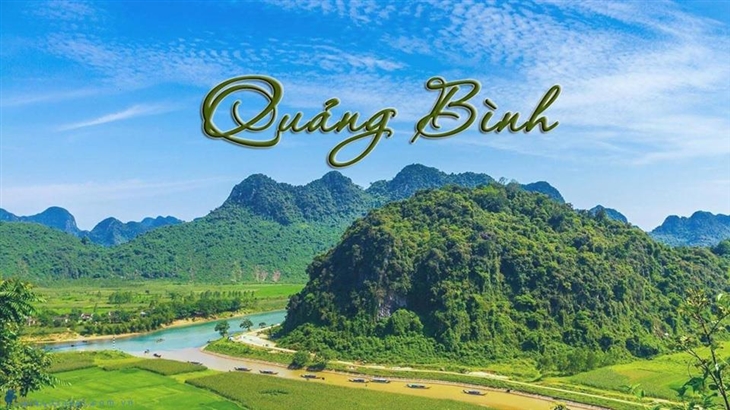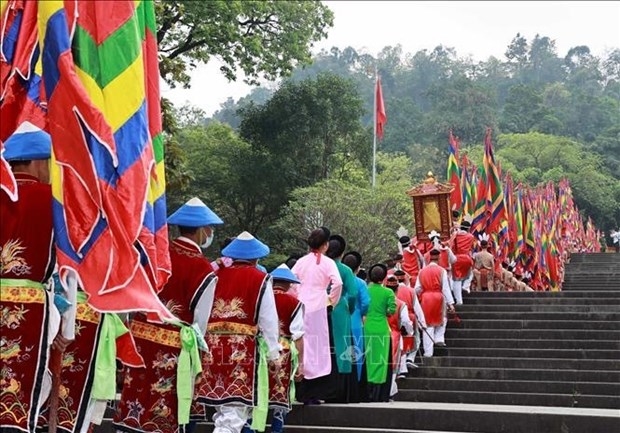Teleconference seeks to tighten economic links between Vietnam, Indian region
Monday, June 5,2023
AsemconnectVietnam - A teleconference was held on June 2 to explore chances for investment and business partnerships between the northeastern region of India and Vietnam.
The event was held by the Vietnamese Trade Office in India, the National Investment Promotion and Facilitation Agency (Invest India) under the Indian Ministry of Commerce and Industry, and the Indian Ministry of Development of North Eastern Region (MDoNER). It also saw the participation of over 70 businesses of both countries.
Vietnamese Ambassador to India Nguyen Thanh Hai said India is an important trading partner of Vietnam, which in turn is also a pillar in the South Asian country’s Act East Policy. The northeastern region is also the starting point of this Act East Policy, so it has received the greatest number of preferential policies from the Indian Government. This region also shares many culinary, customs, and cultural similarities with Vietnam.
Le Thanh Hoa, Deputy Director of the Agro Processing and Market Development Department under the Vietnamese Ministry of Agriculture and Rural Development, said the two countries have been enjoying growth in the trade of agro-forestry-fishery products.
Vietnam exports fishery products, coffee, peppercorn, cashew nut, tea, rubber, timber, rattan and bamboo handicrafts, among others to India. Meanwhile, India ships such items as fishery products, fruits, vegetables, wheat, corn, plant oil, animal fat, and rubber to the Southeast Asian country. Vietnam is running a deficit in agro-forestry-fishery trade with India, with a value of 473.8 million USD in 2021 and 687.73 million USD in 2022, he noted.
Harpreet Singh, Joint Secretary at the MDoNER, said the northeastern region of India, with over 60% of its area covered with forest, holds potential for developing agricultural, bamboo, and handicraft products. It is also home to 17 airports as well as river and sea route systems favourable for goods transportation. These are drivers for economic growth and regional connectivity.
He suggested several areas the two sides can cooperate in, noting that transportation costs in India are declining, so Vietnamese firms can make use of this opportunity.
Geetima Krishna, head of the North East division at Invest India, said the region boasts many demographic advantages, including a young workforce with good knowledge, capability and skills, which is an important impulse for economic partnerships with Vietnam.
Dang Viet Phuong, Deputy Director of the Industry and Trade Department of Vietnam’s Phu Tho province, highlighted his locality’s economic potential and the possibility of cooperation with India in agro-forestry processing and tea export.
He called on Indian enterprises and investors to consider cooperation in tea production and transfer technology to Phu Tho to help improve tea value. He expressed his hope that tea products from his province will be sold in the northeastern region of India in the near future.
For his part, Bui Trung Thuong, Trade Counsellor of Vietnam in India, held that as the northeastern region of India and Vietnam share similarities in terms of geography, climate, and culture, they can further explore cooperation opportunities in agriculture, handicraft production, tourism, and cultural exchange./.
Source: en.vietnamplus.vn/teleconference-seeks-to-tighten-economic-links-between-vietnam-indian-region/254135.vnp
Vietnamese Ambassador to India Nguyen Thanh Hai said India is an important trading partner of Vietnam, which in turn is also a pillar in the South Asian country’s Act East Policy. The northeastern region is also the starting point of this Act East Policy, so it has received the greatest number of preferential policies from the Indian Government. This region also shares many culinary, customs, and cultural similarities with Vietnam.
Le Thanh Hoa, Deputy Director of the Agro Processing and Market Development Department under the Vietnamese Ministry of Agriculture and Rural Development, said the two countries have been enjoying growth in the trade of agro-forestry-fishery products.
Vietnam exports fishery products, coffee, peppercorn, cashew nut, tea, rubber, timber, rattan and bamboo handicrafts, among others to India. Meanwhile, India ships such items as fishery products, fruits, vegetables, wheat, corn, plant oil, animal fat, and rubber to the Southeast Asian country. Vietnam is running a deficit in agro-forestry-fishery trade with India, with a value of 473.8 million USD in 2021 and 687.73 million USD in 2022, he noted.
Harpreet Singh, Joint Secretary at the MDoNER, said the northeastern region of India, with over 60% of its area covered with forest, holds potential for developing agricultural, bamboo, and handicraft products. It is also home to 17 airports as well as river and sea route systems favourable for goods transportation. These are drivers for economic growth and regional connectivity.
He suggested several areas the two sides can cooperate in, noting that transportation costs in India are declining, so Vietnamese firms can make use of this opportunity.
Geetima Krishna, head of the North East division at Invest India, said the region boasts many demographic advantages, including a young workforce with good knowledge, capability and skills, which is an important impulse for economic partnerships with Vietnam.
Dang Viet Phuong, Deputy Director of the Industry and Trade Department of Vietnam’s Phu Tho province, highlighted his locality’s economic potential and the possibility of cooperation with India in agro-forestry processing and tea export.
He called on Indian enterprises and investors to consider cooperation in tea production and transfer technology to Phu Tho to help improve tea value. He expressed his hope that tea products from his province will be sold in the northeastern region of India in the near future.
For his part, Bui Trung Thuong, Trade Counsellor of Vietnam in India, held that as the northeastern region of India and Vietnam share similarities in terms of geography, climate, and culture, they can further explore cooperation opportunities in agriculture, handicraft production, tourism, and cultural exchange./.
Source: en.vietnamplus.vn/teleconference-seeks-to-tighten-economic-links-between-vietnam-indian-region/254135.vnp
Smart border gate control proposed to facilitate trade of farm produce with China
HCM City moves to apply ASEAN Tourism Standards
Current trends guarantee big growth in Vietnam - US trade, investment: USABC leader
HCM City boosts cooperation with Hong Kong enterprises
Vietnamese firms participate in biggest food exhibition in RoK
US extends duties investigation into plywood from Vietnam
Vietnam, Mozambique eye stronger agriculture ties
Vietnam, RoK step up trade, locality-to-locality cooperation
Ample room remains for Vietnamese exports to Africa
Vietnam willing to join efforts for CPTPP elevation, IPEF negotiations
Russian enterprises explore investment opportunities in Can Tho
Vietnam, Italy develop SMART platform to expand online trade connectivity
Ample room for Vietnamese exports to UK: insider
Vietnam joins int’l coffee, tea expo in Singapore

Plan on implementing national strategy on climate change ...
Actively and effectively adapting, reducing vulnerability, loss and damage due to climate change; reduce greenhouse gas emissions ...Scheme on attracting, restructuring and improving quality ...
Urban development plan of Binh Phuoc province in a period ...
Plan on implementing Decision No. 327/QD-TTG dated March ...

Hung Kings Temple Festival 2023 kicks off
The Hung Kings Temple Festival 2023 and the Culture and Tourism Week of Ancestral Land 2023 kicked off in the northern province of Phu Tho ...Vietnam trounce Palestine at AFC U-17 Women's Asian ...
Phu Tho: Festival honours UNESCO intangible cultural ...
Saigontourist Group Food and Culture Festival 2023 opens
Vietnam’s top swimmer Huy Hoang to hold Vietnamese flag at ...



